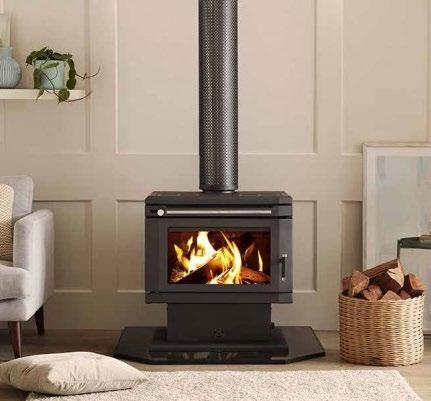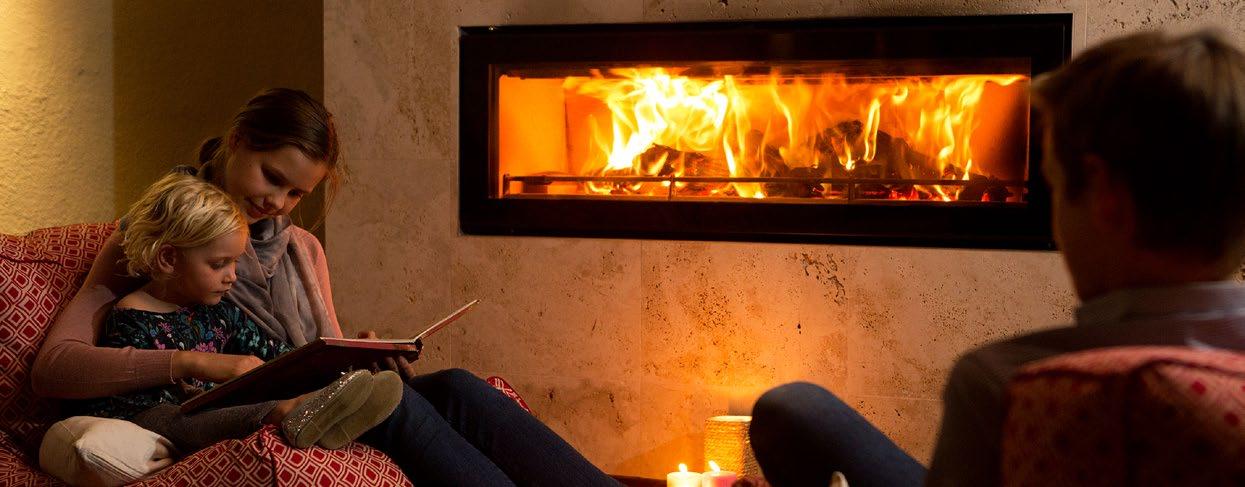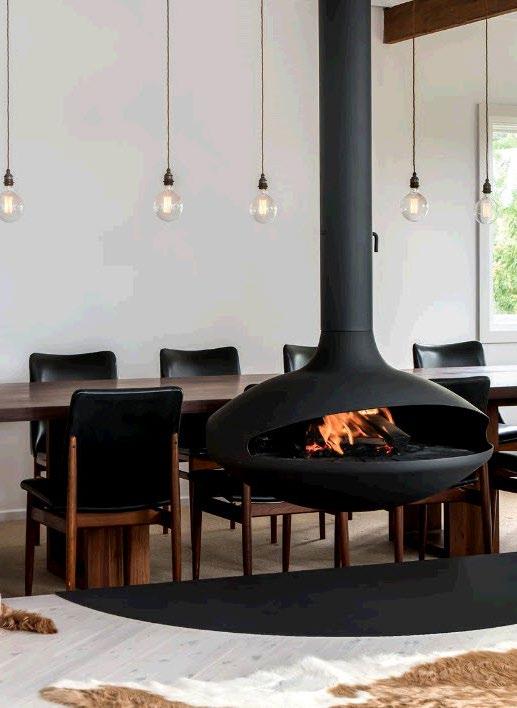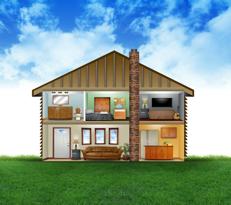
3 minute read
How does a chimney work?
Did you know flue design has a great impact on the flue's efficiency? Chimneys have two main functions. First they create a draft that draws out the gas by-products of wood. Second they release those by-products outside the home.
Think of the chimney as the engine that drives the heater. The more fuel (heat) you give the engine (chimney flue), the more power (draft) it will deliver. And draft is good!
Advertisement
When you build a fire in a heater where the chimney flue is installed correctly, the kindling ignites easily, draft increases rapidly and you should have a nice bright, hot fire quickly.
A straight flue is advantageous as it does not impede the inflow of oxygen or the outflow of by-products and is easier to clean and maintain. Should the realities of your homes architecture require building a bend in your flue, then it is imperative that the angles of the bends and their positioning be installed following the Australian standards. For more information about flue heights and regulations, contact the Australian Home Heating Association.
What effects draft?
The hotter that the gases are inside your chimney compared to the outside temperature, the stronger the draft will be.
The height of your chimney can also effect draft. Chimney length and draft are related - a taller chimney will create a stronger draft.
No wood heater, stove or fireplace can function properly without a good chimney or flue. A good chimney is;
• The correct size, design and height - very critical requirements!
• The correct type for the appliance. There are many options available and a lot are unsuitable
• Properly located - preferably up through the heated space of your home
• Properly installed - All wood heaters need to be installed in accordance with the Australian
Standard AS/NZS 2918 and must comply with the manufacturer’s instructions and the Building Code of Australia. It also helps to check with your local Council to see if there are any building regulations or covenants or restrictions in your area. Failure to install the heater correctly could result in issues with Insurance, should you run into problems. And yes - you must notify your Insurance Company when you have installed a wood heater in your home!
How does a healthy chimney perform?
When you have a chimney or flue system that works optimally you will find;
• The fire lights easily and draft builds quickly
• Smoke does not fill the room when you try and light the fire

• No foul odours are noticeable when the fire is not in use
• No smoke spillage occurs back into your room when you open the fire door to load more wood
On the other hand, if the chimney flue is not working properly then sufficient draft will not be generated inside the flue and subsequently not enough air will be sucked into the fire for it to burn properly. This will cause the fire to be sluggish and smoky causing an abundance of creosote to form in the flue.

Chimney Flue Maintenance and Purchasing
The Australian Home Heating Association (AHHA) encourages those who have a wood heater installed in their home to undertake maintenance of their wood heater in the summer months and have their flue cleaned ready for next season.
When planning to buy a new wood heater and flue system, the first thing you need is reliable advice. It is important to purchase your wood heater and flue from an expert who is dedicated to ensuring you purchase the correct heater and flue for your family and homes requirements.
As an industry body, the AHHA communicates with government to ensure homeowners are afforded the option to have a wood heater in their home. By ensuring you use it correctly and are mindful of the environment, you can be comfortable in having a warm home without compromising your neighbour or affecting the environment. For more information go to http://www.homeheat.com.au/how-to-videos.
Tip
Remember to also clean above the baffle plate when cleaning your flue and or firebox.











